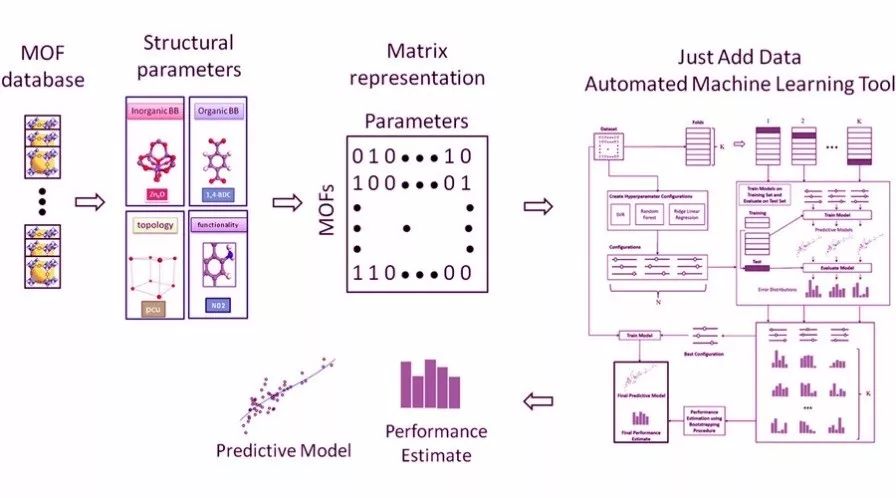海归学者发起的公益学术平台
分享信息,整合资源
交流学术,偶尔风月

金属-有机框架材料(Metal–organic frameworks,MOFs)为多孔配位聚合物,是一类有机-无机杂化材料,由有机配体和无机金属单元组成三维周期性模块,再相互连接形成网络结构。在不同拓扑结构下,这些众多构建模块将可组合成几乎无限拓扑结构的MOF!作为“骨架”材料,它们形成了非常大的孔隙,拥有极大的表面积。若能解开一克这样“非常空”的材料,其表面足够覆盖一个足球场!这样的特性使它们成为催化材料和气体储存材料的最佳选择。目前MOF虽然才发现不久,但已引起了科学界的广泛关注。之前用于筛选此类材料的方法要么太慢,要么不够精确。来自美国克里特大学的Froudakis开发了一种机器学习方法,以化学结构为导向(直觉),结合第一原理计算方法的准确性和经典计算方法的速度,预测具有吸附H
2
/CO
2
性能的多孔MOF材料,有望应用于催化和气体储存。他们通过已知特性来训练机器学习方法,进而识别MOF中的某些结构特征,并将“化学直觉”编入其算法中。然后,他们将该方法应用于新的MOF的大规模筛选测试,发现所作的几个预测与实验数据相匹配。该方法克服了之前方法的一些缺点,预测准确性能随着样本量的增加而增加,不仅有望用于储气MOF的筛选,也有望用于其他诸多特殊用途材料的筛选。该文近期发表于
npj Computational Materials
3
, 40 (2017); doi:10.1038/s41524-017-0045-8
;
标题与摘要如下,论文PDF文末点击
阅读原文
可以获取。

Chemically intuited, large-scale screening of MOFs by machine learning techniques
(通过机器学习技术辅以化学直觉,作大规模金属-有机框架材料筛选)
Giorgos Borboudakis, Taxiarchis Stergiannakos, Maria Frysali, Emmanuel Klontzas, Ioannis Tsamardinos & George E. Froudakis
A novel computational methodology for large-scale screening of Metal–organic frameworks (MOFs) is applied to gas storage with the use of machine learning technologies. This approach is a promising trade-off between the accuracy of ab initio methods and the speed of classical approaches, strategically combined with chemical intuition. The results demonstrate that the chemical properties of MOFs are indeed predictable (stochastically, not deterministically) using machine learning methods and automated analysis protocols, with the accuracy of predictions increasing with sample size. Our initial results indicate that this methodology is promising to apply not only to gas storage in MOFs but in many other material science projects.

本文系网易新闻·网易号“各有态度”特色内容
欢迎广大学者供稿,报道最新研究成果
 投稿、授权、合作事宜请联系
投稿、授权、合作事宜请联系
[email protected] 或微信ID: scholarset
回复“
目录
”或“
分
类
”,浏览知社更多精华。长按二维码识别,可以关注/进入公众号进行回复。





